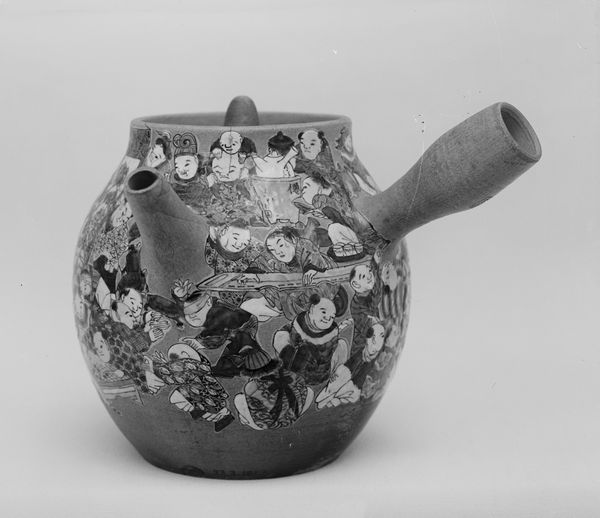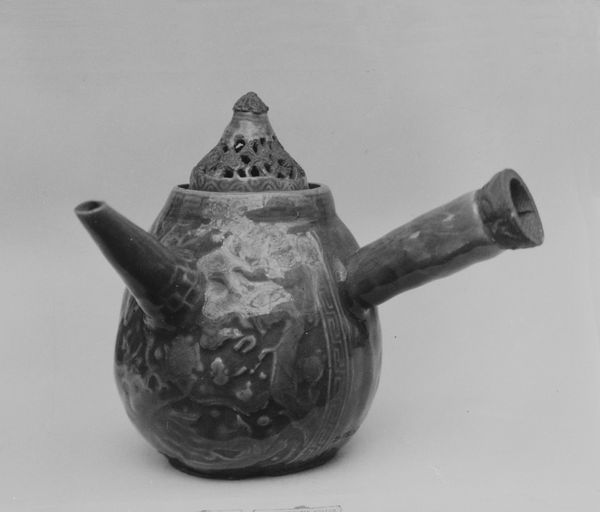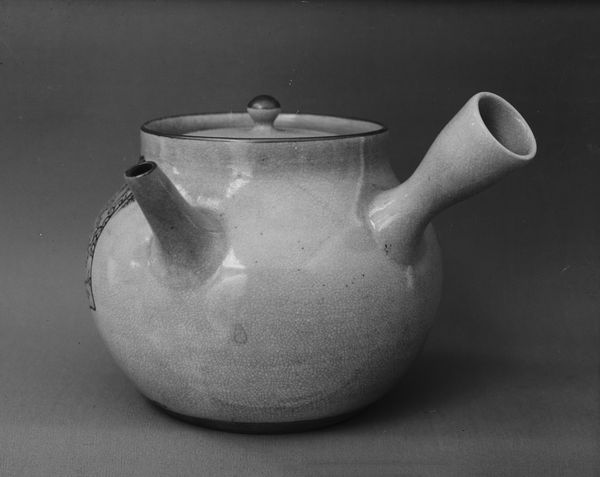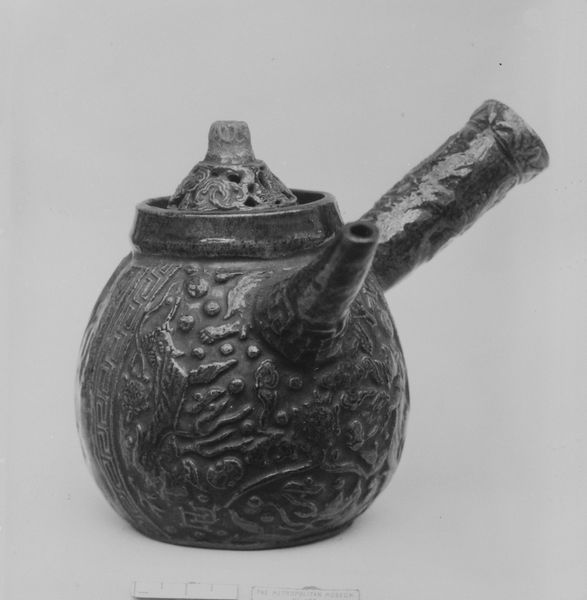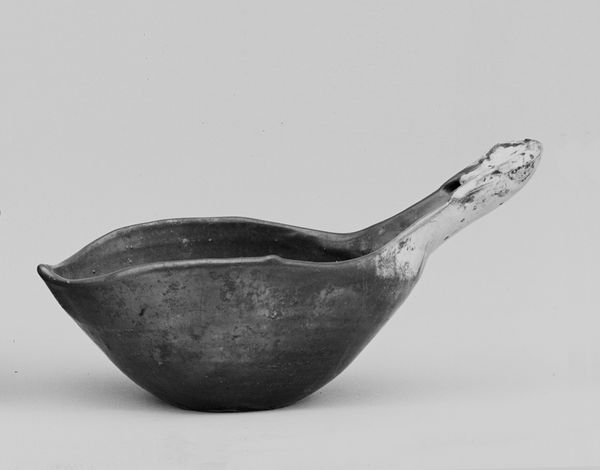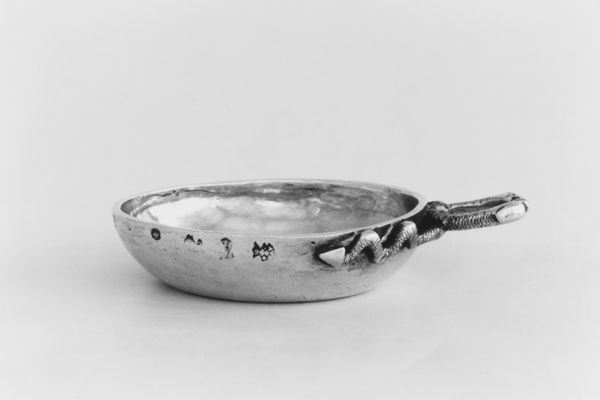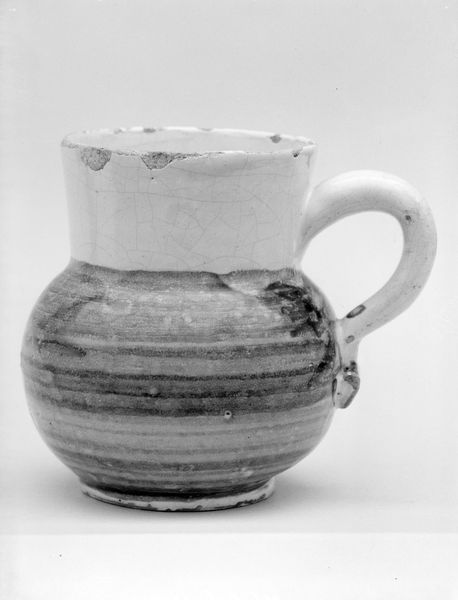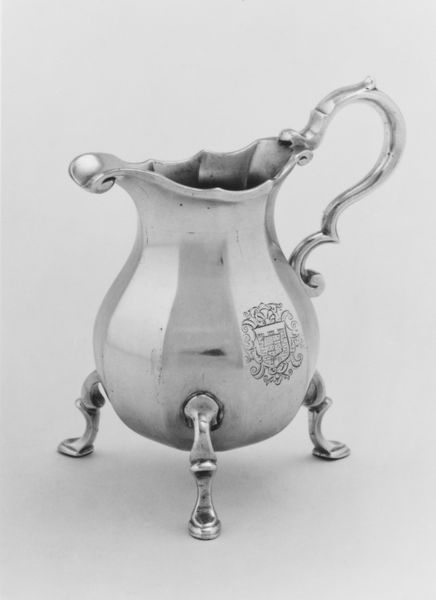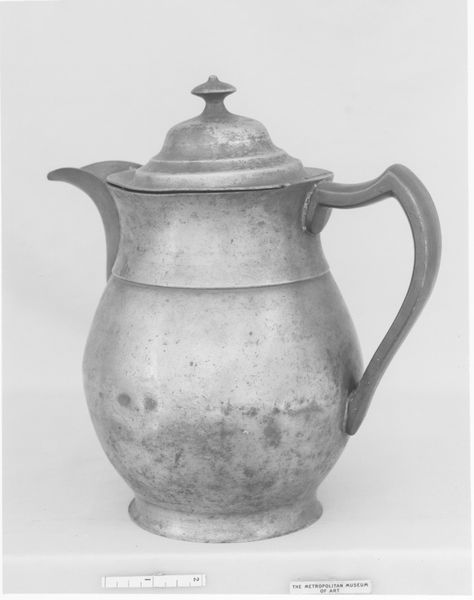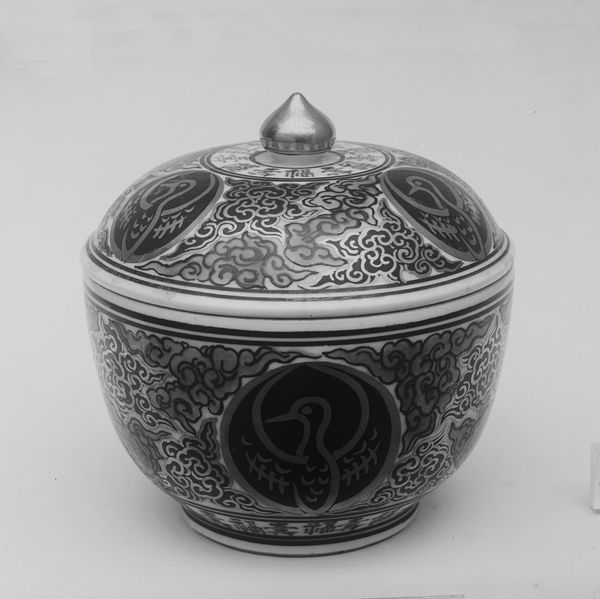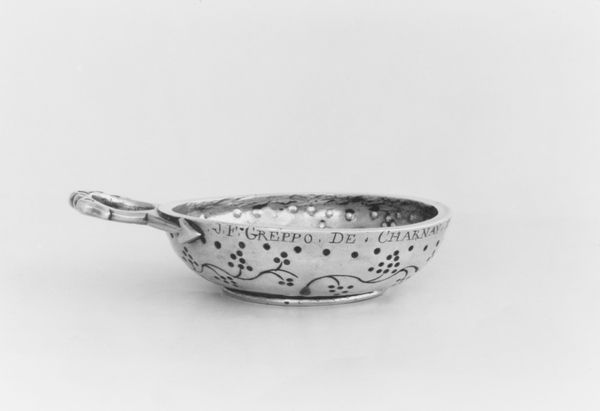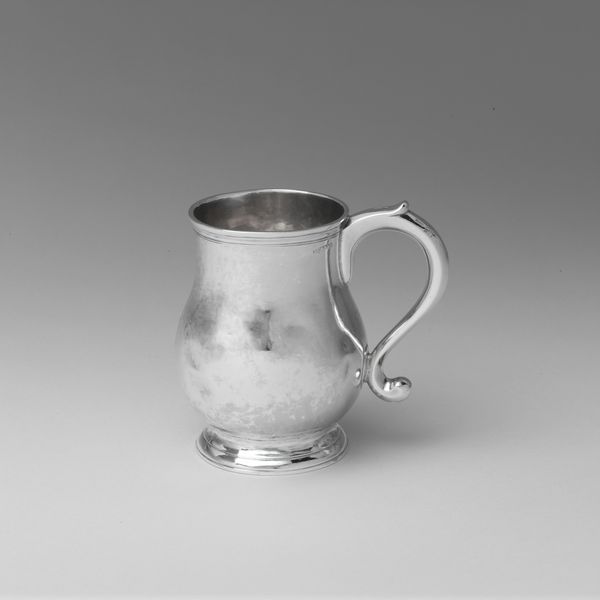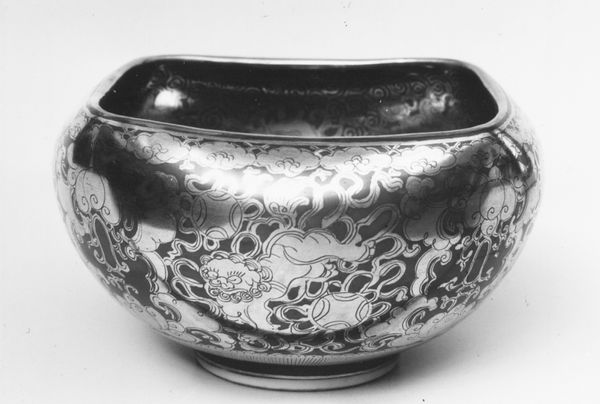
ceramic
#
asian-art
#
ceramic
#
stoneware
Dimensions: H. 3 1/4 in. (8.3 cm)
Copyright: Public Domain
Editor: We're looking at a 19th-century stoneware teapot, currently held at the Metropolitan Museum of Art. What strikes me is the intricate decoration – it feels almost like a miniature stage, crammed with figures. How do you interpret this work, thinking about its history? Curator: It’s fascinating to consider this teapot not just as a functional object, but as a site of cultural exchange and power dynamics. 19th-century Asian art was often created in a context of unequal exchange with colonial powers. Do you think the figures depicted here—possibly referencing deities or prominent historical individuals—might represent a form of cultural resistance or assertion of identity in a time of increasing Western influence? Editor: That’s a really interesting point. I hadn't considered it as a statement against colonial powers, but more as a piece for the elite within the culture, illustrating power. What about the function, beyond the act of resistance you suggest? Could the imagery connect with the ceremony around tea and, if so, would this ritual be different if prepared or displayed only for the elite? Curator: The specific choice of imagery absolutely elevates the everyday. It speaks to social stratification and a visual vocabulary that reinforces class distinctions. The images promote ideals related to governance, scholarly achievement, and virtue, which historically acted as a reminder and reinforcement to its high-status users. But the ritualistic preparation, service and shared drink allows these elements to reach a wider audience, albeit by viewing only. Editor: I’m really fascinated by your take on how it could be viewed. I see the resistance but your view connects how these traditions still are, even today, vehicles of representation and cultural value. Thanks so much for sharing this perspective. Curator: Absolutely. I'm glad that this discussion around history, function and art allowed us both to reconsider it with a more contemporary interpretation.
Comments
No comments
Be the first to comment and join the conversation on the ultimate creative platform.
